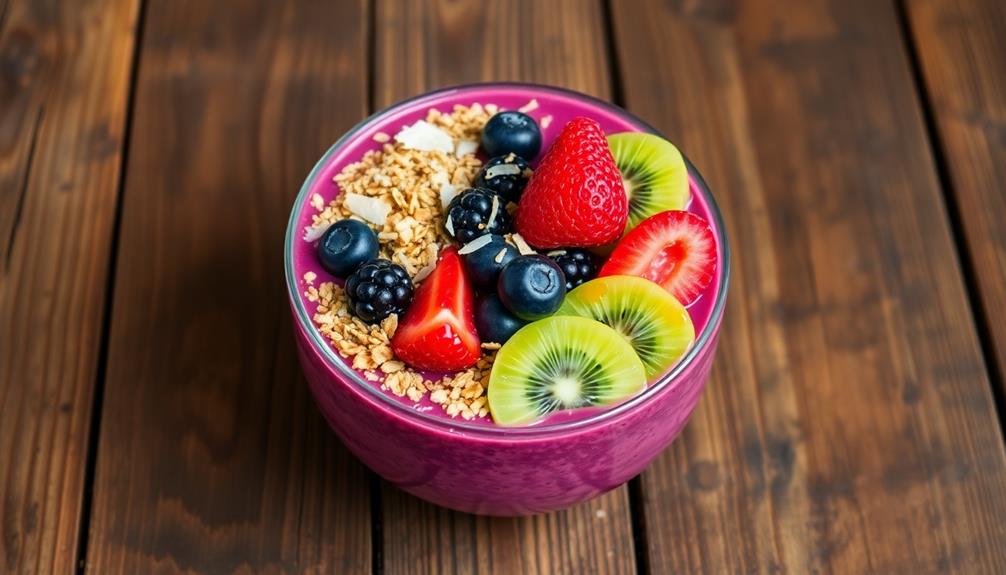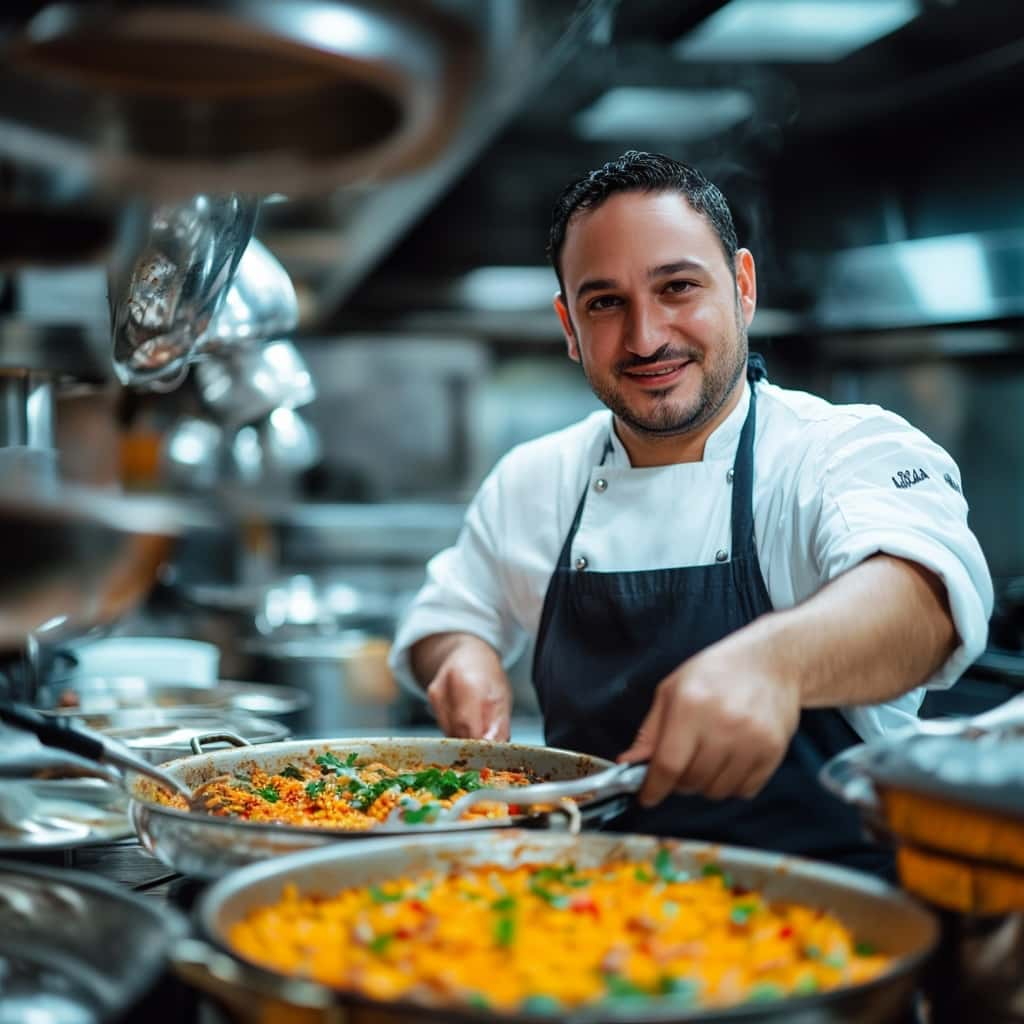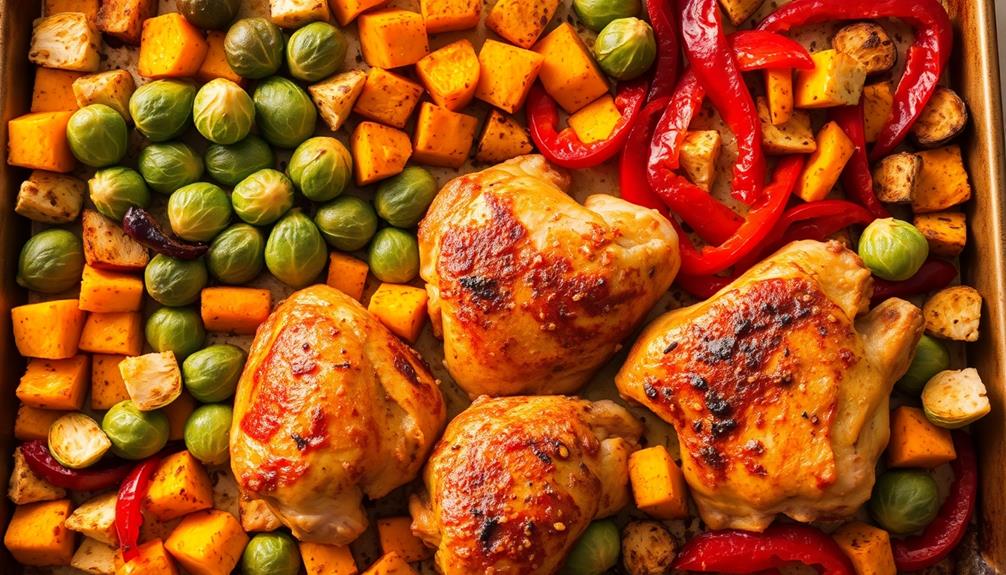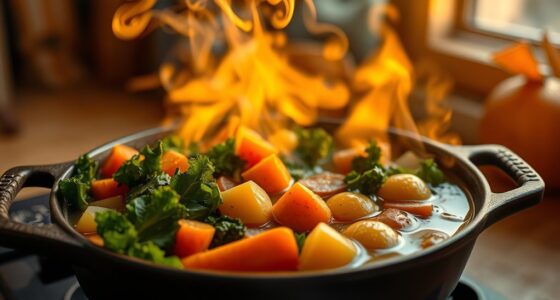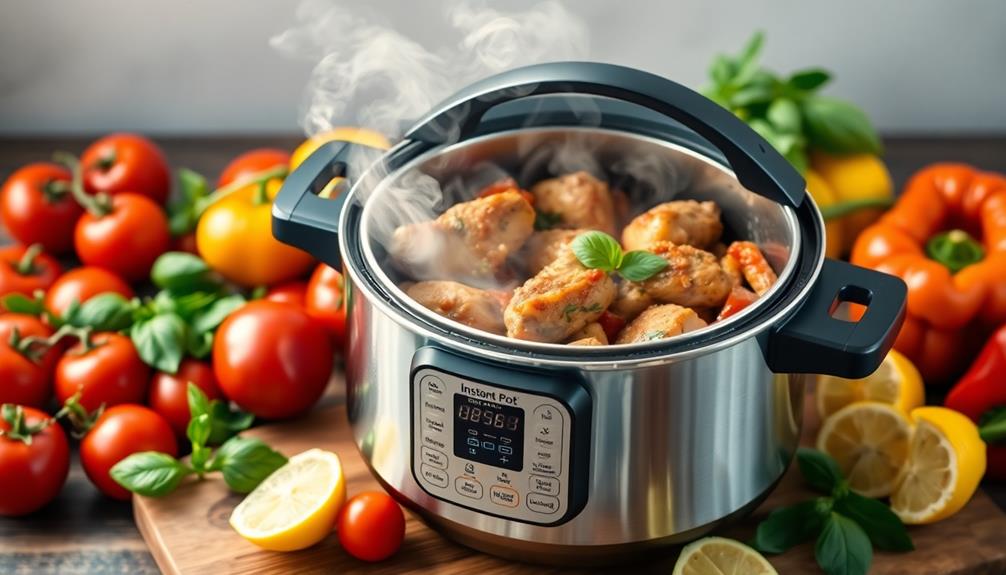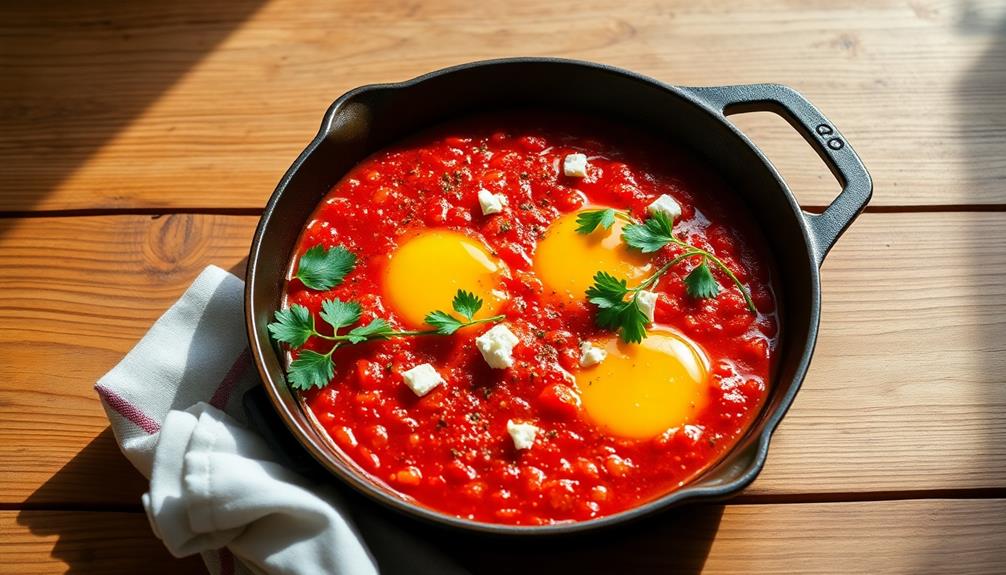Discover the secrets of the mighty slow cooker and unlock a world of hassle-free, mouthwatering meals! This trusty appliance is a game-changer for busy home cooks, whipping up tender, flavorful dishes with minimal effort. Just toss in your ingredients, set it, and let the slow cooker work its magic – no more slaving over a hot stove! From hearty stews to comforting casseroles, the slow cooker delivers delicious results every time. Unleash your culinary creativity and explore the endless recipe possibilities. Prepare to be amazed by the convenience and flavor this kitchen wonder can bring to your busy days.
Key Takeaways
- Slow cookers allow for effortless meal preparation, enabling you to toss in ingredients and let the appliance do the work while you manage daily tasks.
- Slow cooking enhances flavor and tenderness, making it ideal for budget-friendly cuts of meat and creating comforting, homemade dishes.
- Programmable features and digital timers on modern slow cookers provide added convenience, ensuring your meals are ready when you arrive home.
- Slow cooker recipes often require minimal prep work, making it easy to assemble a complete meal with little hands-on time.
- Leftovers from slow-cooked meals can be easily reheated and enjoyed throughout the week, saving time and money during busy workdays.
History
The slow cooker, also known as a Crock-Pot, has a fascinating history that traces back to the 1940s. It was invented by Irving Naxon, a Chicago inventor, who came up with the idea after his grandmother told him about a Sabbath-friendly stew she used to make.
Naxon's design, called the Naxon Beanery, was a countertop appliance that slowly cooked food at a low temperature, allowing busy families to enjoy hot, home-cooked meals without spending hours in the kitchen.
In the 1970s, the Naxon Beanery was acquired by Rival Manufacturing and renamed the Crock-Pot. As the Crock-Pot grew in popularity, home cooks discovered the convenience of being able to toss ingredients into the pot in the morning and return to a delicious, fully-cooked meal in the evening.
Over the decades, the slow cooker has evolved, with newer models offering additional features like digital timers and programmable settings. Today, the slow cooker remains a beloved kitchen appliance, helping busy families enjoy the flavors of home-cooked meals with minimal effort.
Recipe
Slow cooking is a fantastic way to create flavorful and tender dishes with minimal effort. The gentle, long cooking process allows the flavors to meld together, resulting in a meal that's both comforting and delicious.
This method can be particularly beneficial for those managing a budget, as it allows for the use of less expensive cuts of meat that become tender over the long cooking time, making it a practical choice for creating a personal budget.
This recipe for a hearty stew is perfect for a busy weeknight or a cozy weekend dinner. The combination of juicy beef, earthy vegetables, and a rich broth makes for a satisfying and nourishing meal.
Ingredients:
- 2 lbs beef stew meat, cut into 1-inch cubes
- 3 medium carrots, peeled and sliced
- 2 celery stalks, sliced
- 1 onion, diced
- 3 cloves garlic, minced
- 2 cups beef broth
- 1 cup red wine
- 2 bay leaves
- 1 tsp dried thyme
- 1 tsp dried rosemary
- Salt and black pepper to taste
Cooking Instructions:
In a slow cooker, combine the beef, carrots, celery, onion, and garlic. Pour in the beef broth and red wine, and then add the bay leaves, thyme, and rosemary. Season with salt and pepper to taste.
Cover and cook on low for 8-10 hours or on high for 4-6 hours, until the beef is fork-tender.
When cooking this dish in a slow cooker, it's important to resist the urge to lift the lid too often, as this can release heat and moisture, slowing down the cooking process.
Additionally, consider making the stew a day in advance, as the flavors tend to deepen and become more pronounced after resting in the refrigerator overnight.
Serve the stew with crusty bread or over mashed potatoes for a hearty and comforting meal.
Cooking Steps
Add all your ingredients to the slow cooker, give it a good stir, and pop on the lid.
Let it cook away while you go about your day – you can adjust the temperature if needed to get the perfect result.
When it's done, serve it up right away or stash the leftovers in the fridge for a tasty meal later in the week. It’s perfect for quick lunches or dinners when you’re short on time. Planning ahead and making a large batch is also great for meal prep for the whole week, saving you the hassle of cooking every day. Just portion it out into containers and you’re set to enjoy a delicious, homemade dish anytime!
Step 1. Add Ingredients to Slow Cooker
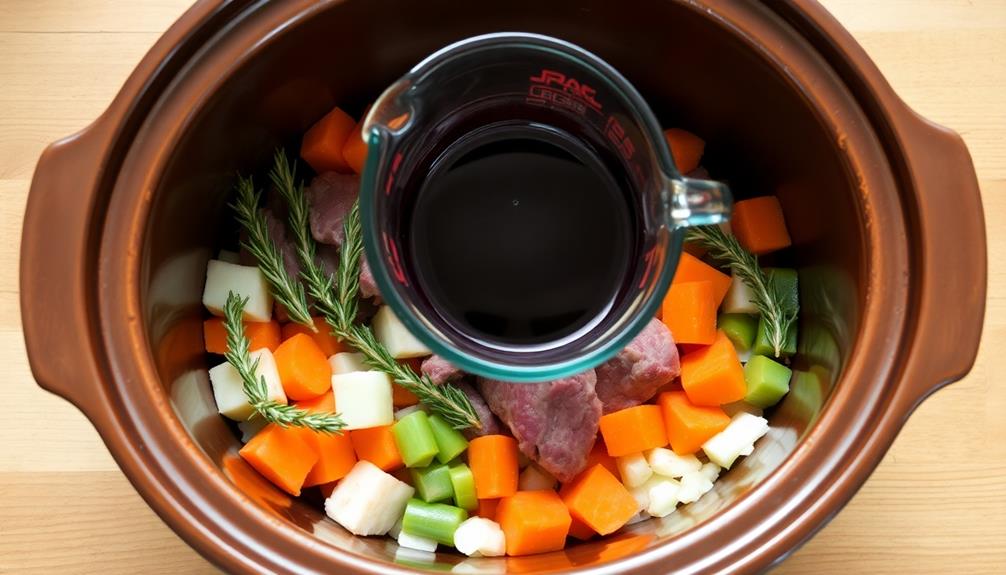
Once you've gathered all your ingredients, it's time to start building your slow cooker dish.
First, begin by layering the heartier items like root vegetables, meat, and potatoes on the bottom of the slow cooker. This ensures they cook through thoroughly.
Next, add any softer vegetables, herbs, and sauces on top. Be sure to distribute the ingredients evenly for even cooking.
Don't be afraid to get creative – you can try different flavor combinations by mixing and matching your favorite ingredients. Just remember to keep the portions balanced so everything cooks at the same rate.
Finally, add just enough liquid, like broth or tomato sauce, to cover the ingredients without overfilling the pot.
Secure the lid and set the cooker to the appropriate heat setting. Now you can sit back, relax, and let the slow cooker work its magic!
Step 2. Cover and Cook
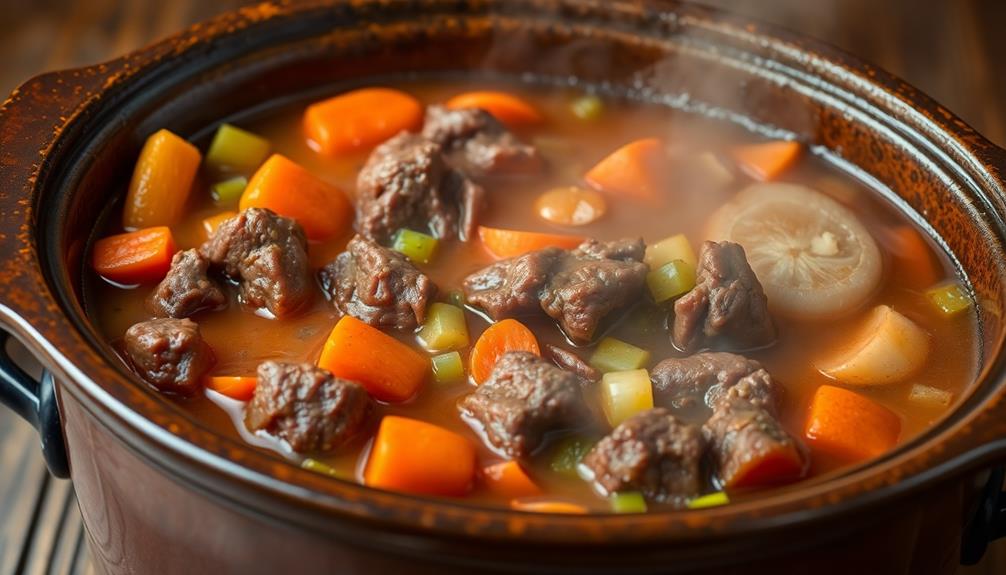
With the ingredients arranged, it's time to commence the cooking process. Cover your slow cooker with the lid, ensuring it's securely in place. This traps the heat and steam inside, allowing the flavors to meld together beautifully.
Turn the heat setting to either "low" or "high" depending on your recipe and desired cooking time. Low settings are great for longer, all-day cooking, while high settings work well for quicker meals.
Now, relax and let the slow cooker work its magic! The gentle, even heat will gradually transform the ingredients into a delicious, tender dish.
Resist the urge to frequently remove the lid, as this can disrupt the cooking process and prolong the overall time. Every time you lift the lid, you lose valuable heat and moisture. Trust the process and let the slow cooker do its job.
In a few hours or even overnight, your meal will be ready to serve. The aroma wafting through your home is sure to have your family eagerly anticipating mealtime.
Step 3. Adjust Cooking Temperature if Needed
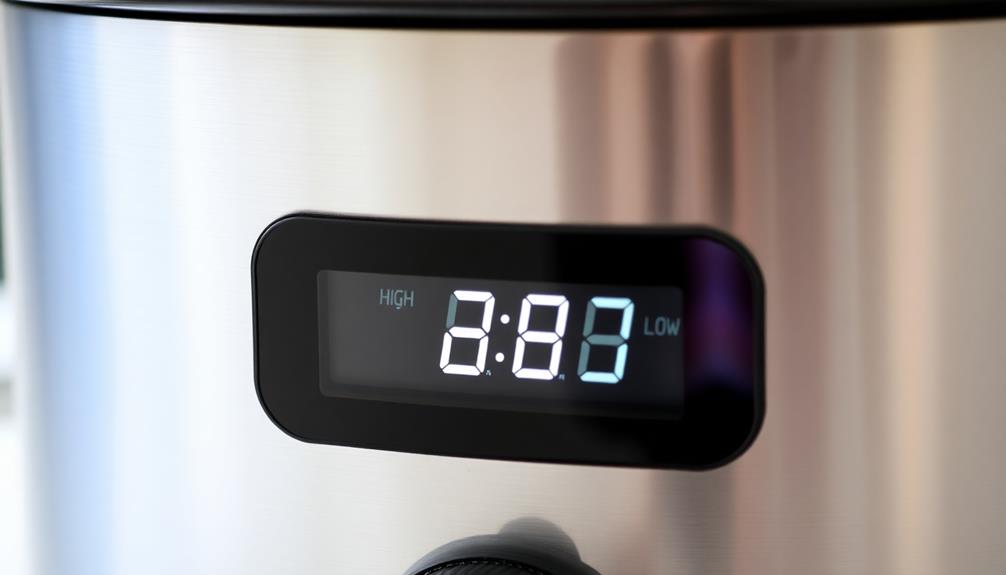
Occasionally, adjusting the cooking temperature may be necessary to achieve the desired results.
As you're slow-cooking, keep an eye on how the dish is progressing. If the food seems to be cooking too quickly, you can lower the temperature to prevent it from drying out or becoming tough.
On the other hand, if the dish isn't simmering as much as you'd like, you can bump up the heat a bit.
Step 4. Serve Immediately or Refrigerate Leftovers

When your slow-cooker dish is ready, you can either serve it immediately or refrigerate any leftovers. If you're ready to eat, simply scoop out the piping hot food and enjoy! The slow cooker will keep your meal at the perfect serving temperature.
However, if you've got extra portions, it's best to refrigerate them right away. Regularly checking the condition of your food storage can help ensure freshness, much like how regular cleaning is essential for air purifiers.
Transfer the leftovers to an airtight container and pop them in the fridge. This will prevent the food from sitting out too long and spoiling.
When you're hungry later, you can easily reheat the leftovers in the microwave or on the stove. The slow-cooker magic will keep your meal tasting fresh and delicious, even days later.
Just remember to store any extras properly and you'll be able to savor your slow-cooked creation again and again.
Step 5. Enjoy Leftovers Later in the Week

If you have any leftovers from your slow-cooker dish, you can easily enjoy them later in the week. Simply store the leftovers in an airtight container in the refrigerator. They'll stay fresh for up to 4 days.
When you're ready for a quick and delicious meal, just reheat the leftovers. You can do this on the stovetop, in the microwave, or even back in the slow cooker.
Proper diet is essential for maintaining your health, just like savoring those flavorful leftovers. The slow-cooker leftovers will taste just as amazing as when you first made them. Pair them with some fresh veggies or a side salad for a complete and satisfying meal.
Leftovers are a great way to save time and money during the busy workweek. With just a few minutes of reheating, you'll have a hot, homemade meal ready to enjoy.
Final Thoughts
As you've explored the secrets of slow cookers, what final thoughts do you have on this convenient kitchen appliance?
You've learned how slow cookers make it a breeze to enjoy delicious, home-cooked meals on even the busiest days. From hearty stews and tender roasts to flavorful dips and desserts, this nifty appliance handles it all with ease.
The best part? You can simply toss in the ingredients, set it, and forget it until it's time to eat. No more hours of hands-on prep work or standing over a hot stove. Just imagine coming home to the mouthwatering aroma of a hot, homemade dinner waiting for you.
Slow cookers are truly a lifesaver for busy families and individuals alike. As you continue to explore new recipes and techniques, you'll find that this kitchen essential is an invaluable tool for creating convenient, crowd-pleasing meals with minimal effort.
Get ready to enjoy the magic of set-it-and-forget-it cooking!
Frequently Asked Questions
Can I Use Frozen Ingredients in the Slow Cooker?
Yes, you can use frozen ingredients in the slow cooker. The slow cooking process will gradually thaw and cook the frozen items, allowing you to create delicious meals with minimal prep time.
How Do I Adjust Cooking Times for Different Slow Cooker Sizes?
Adjusting cooking times for different slow cooker sizes is essential. Generally, a larger slow cooker will require a longer cooking time than a smaller one. Check the recipe instructions and monitor your dish to ensure it cooks through evenly.
Can I Add Dairy Products at the Beginning of Cooking?
You can add dairy products at the beginning of cooking in your slow cooker, but they may curdle or separate over the long cooking time. It's generally better to add them towards the end to preserve their texture and flavor.
How Do I Prevent Overcooking or Drying Out of Slow Cooker Meals?
To prevent overcooking or drying out of slow cooker meals, don't overfill the pot, check the liquid levels periodically, and reduce the cooking time if your recipe includes dairy products or delicate ingredients.
Can I Use the Slow Cooker for Baking or Desserts?
Yes, you can use your slow cooker for baking and desserts! It's a great way to make cakes, cobblers, and even cheesecake. Just adjust the cooking time and check for doneness. The slow, moist heat is perfect for creating delicious slow-cooked treats.

